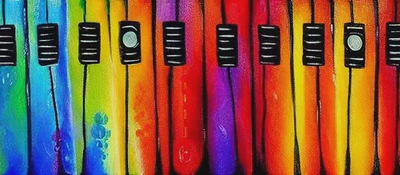This example of a GAN generator produces hand xray images like those in the MedNIST dataset
This model is a generator for creating images like the Hand category in the MedNIST dataset. It was trained as a GAN and accepts random values as inputs to produce an image output. The train.json file describes the training process along with the definition of the discriminator network used, and is based on the MONAI GAN tutorials
.
This is a demonstration network meant to just show the training process for this sort of network with MONAI, its outputs are not particularly good and are of the same tiny size as the images in MedNIST. The training process was very short so a network with a longer training time would produce better results.
Downloading the Dataset
Download the dataset from here and extract the contents to a convenient location.
The MedNIST dataset was gathered from several sets from TCIA , the RSNA Bone Age Challenge , and the NIH Chest X-ray dataset .
The dataset is kindly made available by Dr. Bradley J. Erickson M.D., Ph.D. (Department of Radiology, Mayo Clinic) under the Creative Commons CC BY-SA 4.0 license .
If you use the MedNIST dataset, please acknowledge the source.
Training
Assuming the current directory is the bundle directory, and the dataset was extracted to the directory ./MedNIST , the following command will train the network for 50 epochs:
python -m monai.bundle run training --meta_file configs/metadata.json --config_file configs/train.json --logging_file configs/logging.conf --bundle_root .
Not also the output from the training will be placed in the models directory but will not overwrite the model.pt file that may be there already. You will have to manually rename the most recent checkpoint file to model.pt to use the inference script mentioned below after checking the results are correct. This saved checkpoint contains a dictionary with the generator weights stored as model and omits the discriminator.
Another feature in the training file is the addition of sigmoid activation to the network by modifying it’s structure at runtime. This is done with a line in the training section calling add_module on a layer of the network. This works best for training although the definition of the model now doesn’t strictly match what it is in the generator section.
The generator and discriminator networks were both trained with the Adam optimizer with a learning rate of 0.0002 and betas values [0.5, 0.999] . These have been emperically found to be good values for the optimizer and this GAN problem.
Inference
The included inference.json generates a set number of png samples from the network and saves these to the directory ./outputs . The output directory can be changed by setting the output_dir value, and the number of samples changed by setting the num_samples value. The following command line assumes it is invoked in the bundle directory:
python -m monai.bundle run inferring --meta_file configs/metadata.json --config_file configs/inference.json --logging_file configs/logging.conf --bundle_root .
Note this script uses postprocessing to apply the sigmoid activation the model’s outputs and to save the results to image files.
Export
The generator can be exported to a Torchscript bundle with the following:
python -m monai.bundle ckpt_export network_def --filepath mednist_gan.ts --ckpt_file models/model.pt --meta_file configs/metadata.json --config_file configs/inference.json
The model can be loaded without MONAI code after this operation. For example, an image can be generated from a set of random values with:
import torch
net = torch.jit.load("mednist_gan.ts")
latent = torch.rand(1, 64)
img = net(latent) # (1,1,64,64)
License
Copyright (c) MONAI Consortium
Licensed under the Apache License, Version 2.0 (the “License”); you may not use this file except in compliance with the License. You may obtain a copy of the License at
http://www.apache.org/licenses/LICENSE-2.0
Unless required by applicable law or agreed to in writing, software distributed under the License is distributed on an “AS IS” BASIS, WITHOUT WARRANTIES OR CONDITIONS OF ANY KIND, either express or implied. See the License for the specific language governing permissions and limitations under the License.
Follow AI Models on Google News
An easy & free way to support AI Models is to follow our google news feed! More followers will help us reach a wider audience!
Google News: AI Models

